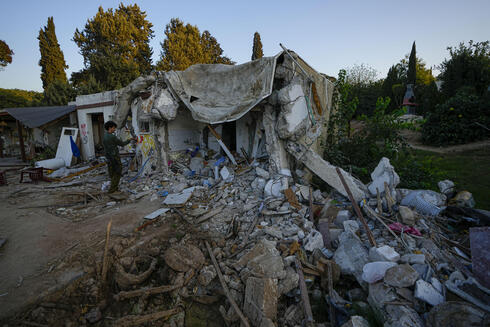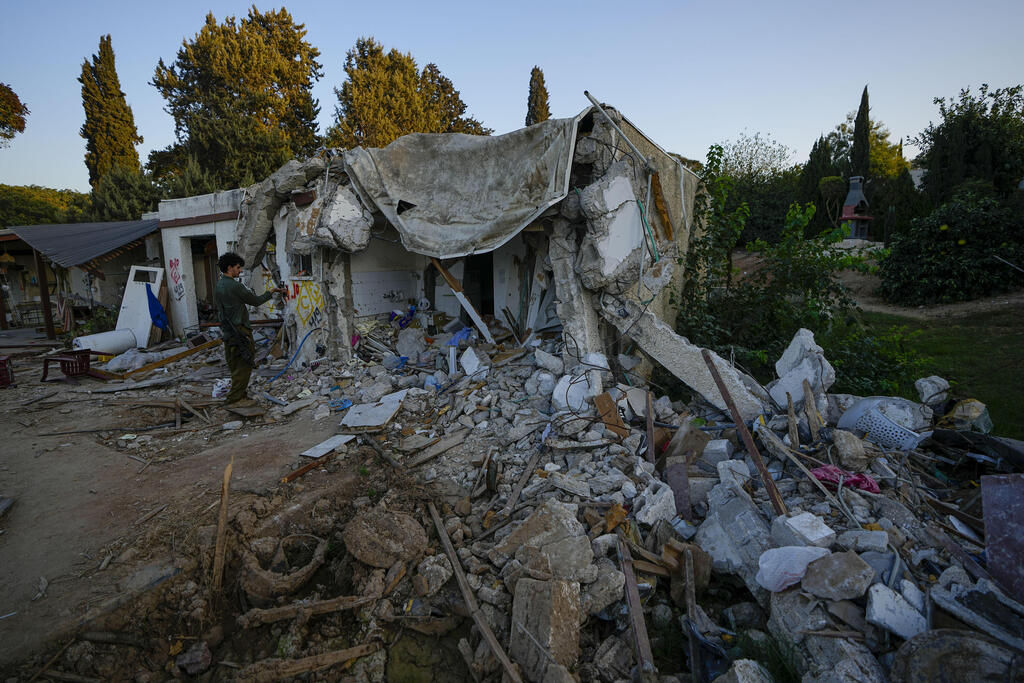
ISRAEL AT WAR
Ministries seeking to extend period of access to Israel’s national biometric database, sparking concern about data privacy
Since the beginning of Israel’s war with Hamas, in accordance with the emergency regulations, data has been used from the biometric database to help verify the identities of victims. Now, the government seeks to extend these powers to one year, which could endanger the security of the database.
National crises often provide an opportunity to make significant changes with far-reaching consequences under the guise of public security, and the current war against Hamas is no exception. In recent days, the government has begun to advance plans to make permanent changes to long-established procedures and legislation. The reason seems justified - to enhance the biometric database for identifying murder victims, abductees, and missing persons. However, experts are concerned that the temporary changes implemented during wartime will become permanent even once the war is over.
Over the weekend, the Ministry of Interior and the Ministry of National Security proposed a joint legal amendment to utilize facial images and fingerprint records stored in the national biometric database to assist in identifying victims of terror attacks and subsequent military events. Currently, the biometric database contains biometric data of approximately 7 million people - the majority of Israel's population. This information could, ostensibly, aid in identifying the victims of Hamas' terror attacks and related incidents.
1 View gallery


A destroyed home at Kibbutz Kfar Aza, the site of one of the worst massacres on October 7.
(Credit: AP Photo/Ariel Schalit)
"Given the current lack of a comprehensive response to the identification needs of law enforcement and the IDF, there is an essential and urgent need to transfer information from the biometric database at the Ministry of Interior to both the police and the general security services, the Mossad, and the IDF for the purpose of identifying murder victims, missing persons, and hostages, as well as to allow the police to receive information from other entities," their statement reads.
Emergency regulations enacted in the first week of the war allowed the biometric authority to provide law enforcement and other security agencies with biometric data for the purpose of identity verification, "as required due to the events that have triggered a state of emergency." The amendment now seeks to formalize and extend this policy to a one-year temporary order.
Fingerprints will be saved
According to the amendment, at the request of the police, they will be provided with data from the biometric database, managed by the National Biometric Database Authority, that is necessary for identity verification of a person, for the missing and dead, in the context of the war. This represents a fundamental change in the operation of the biometric database since, according to the law regulating its activities, the only sharing of data from the database that has previously been authorized is to provide identification results to law enforcement (meaning the police can submit a facial image or fingerprint to the database and receive an answer regarding if there is a match, but they cannot access the biometric data itself).
The amendment introduces an additional change to the operation of the database, stipulating that fingerprint records, which were previously excluded from the biometric database just a year ago, will now be retained until the expiration of the emergency regulation. "The proposed law likely anticipates a possible continuation of the disaster and the need to identify many victims in a short time. Therefore, it stipulates that for anyone who requests an identity card now, their fingerprint data will remain in the database even if they request otherwise," said Dr. Tehilla Shwartz-Altshuler from the Israel Democracy Institute. "It is difficult to argue against such a concern, but even if these measures are necessary now, a 'shutdown mechanism' should be included for the law, stipulating that it will cease to be in effect once the state of war ends, and not to use the war as a pretext to change the entire mechanism upon which the biometric database was established."
She is critical of granting permission to access data from the database. "Using the biometric database, especially in order to extract data from it to another database, that is to create a new biometric database, has costs in terms of data security and maintenance," she explained. "It is not for nothing that the database was established as part of a separate authority and with very strict security. Therefore, it is essential to combine those responsible for data security in general, such as the National Cyber Directorate, and the National Biometric Database Authority, and ensure periodic reporting to the responsible authority, such as the Interior Minister. It is also necessary to ensure that all information that is not used will be deleted, especially considering that the amendment allows even the fingerprints of those who did not want to be included in the database to be added."
Zvi Dvir from the Movement for Digital Rights has said that the amendment is not the only change included in the temporary order. The emergency regulation includes two legislative amendments unrelated to the need for identifying murder victims, missing persons, clandestine individuals, and captives. The first is to halt the process of clearing the database of the fingerprint data of Israeli citizens. The second is a legislative amendment that allows the Population and Immigration Authority to use facial images with reduced biometric quality. "These issues should be separated from the emergency regulation," Dvir says.
Is the database still needed?
Professor Eran Toch, Head of the Industrial Engineering Department at Tel Aviv University, says, "I understand the need for using the database and the urgency to identify victims. Such processes can theoretically be carried out while preserving privacy, but it is very challenging to do so at the speed currently needed. In this situation, it is especially critical that a clearly defined and independent privacy and information security officer is appointed to use the database and that they report directly to the public."
Shwartz-Altshuler also raised doubts about the necessity of the database as part of the identification process. "It is clear that the terrible circumstances require special measures, and there is no dispute that we must help identify the remaining victims," she said. "However, in terms of necessity, we must carefully consider whether there is still value in the data from the biometric database (which contains facial images and fingerprints) to identify those who remain unidentified from the October 7 disaster. If such a need existed, it was addressed in the first two weeks after the disaster through emergency regulations. Currently, it appears that other means of identification are needed."
Dvir also noted that the government is promoting the emergency regulation without presenting data on the efficiency of using the biometric database. "What biometric data was provided? What type of biometrics was used, and in what cases was it not possible to use alternative identification methods?" he asked. "Most of the bodies have already been identified in the past month, and it is not possible to identify the remaining bodies using biometric data comparisons. A thorough explanation is needed as to why the regulation should be extended for an additional period."













